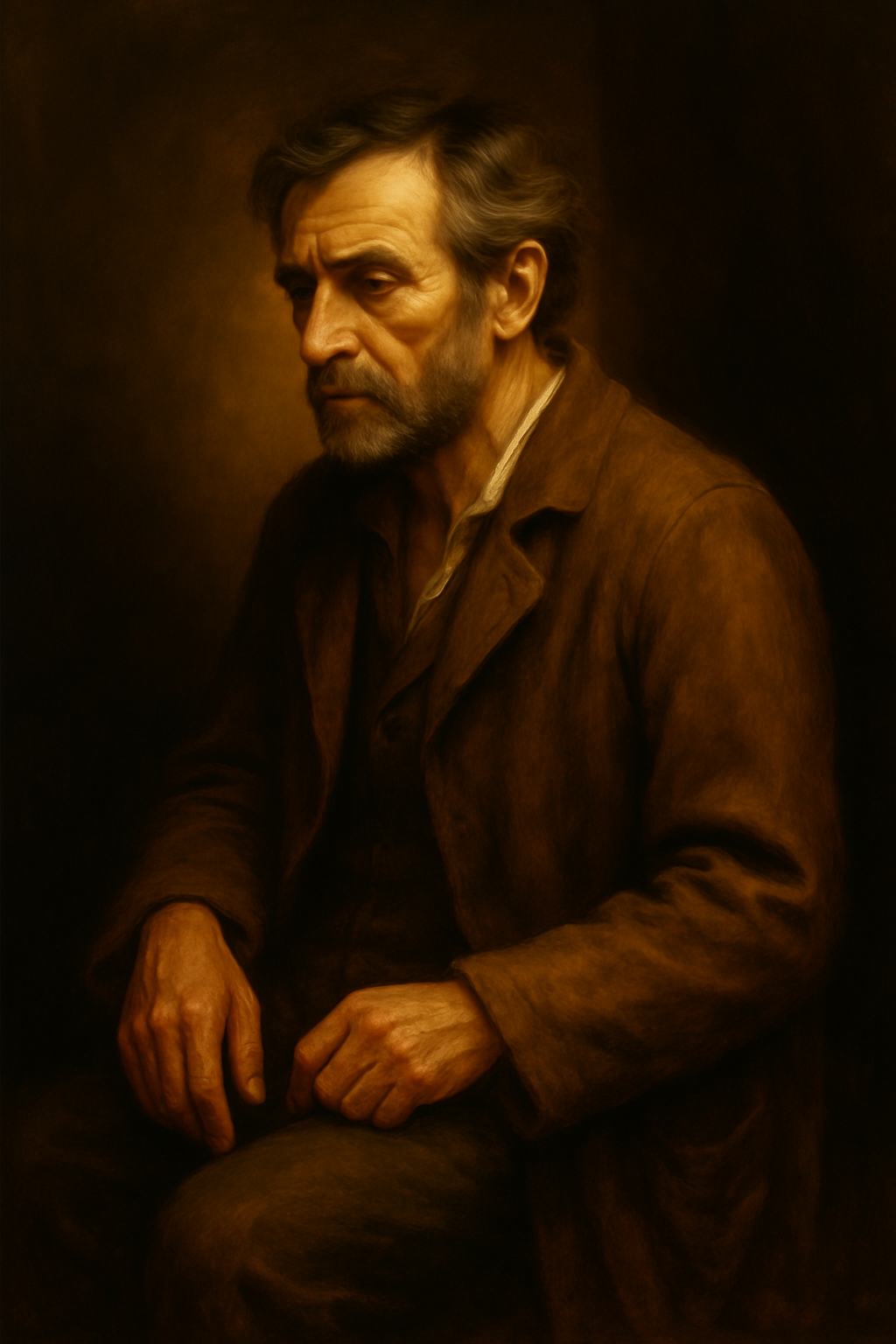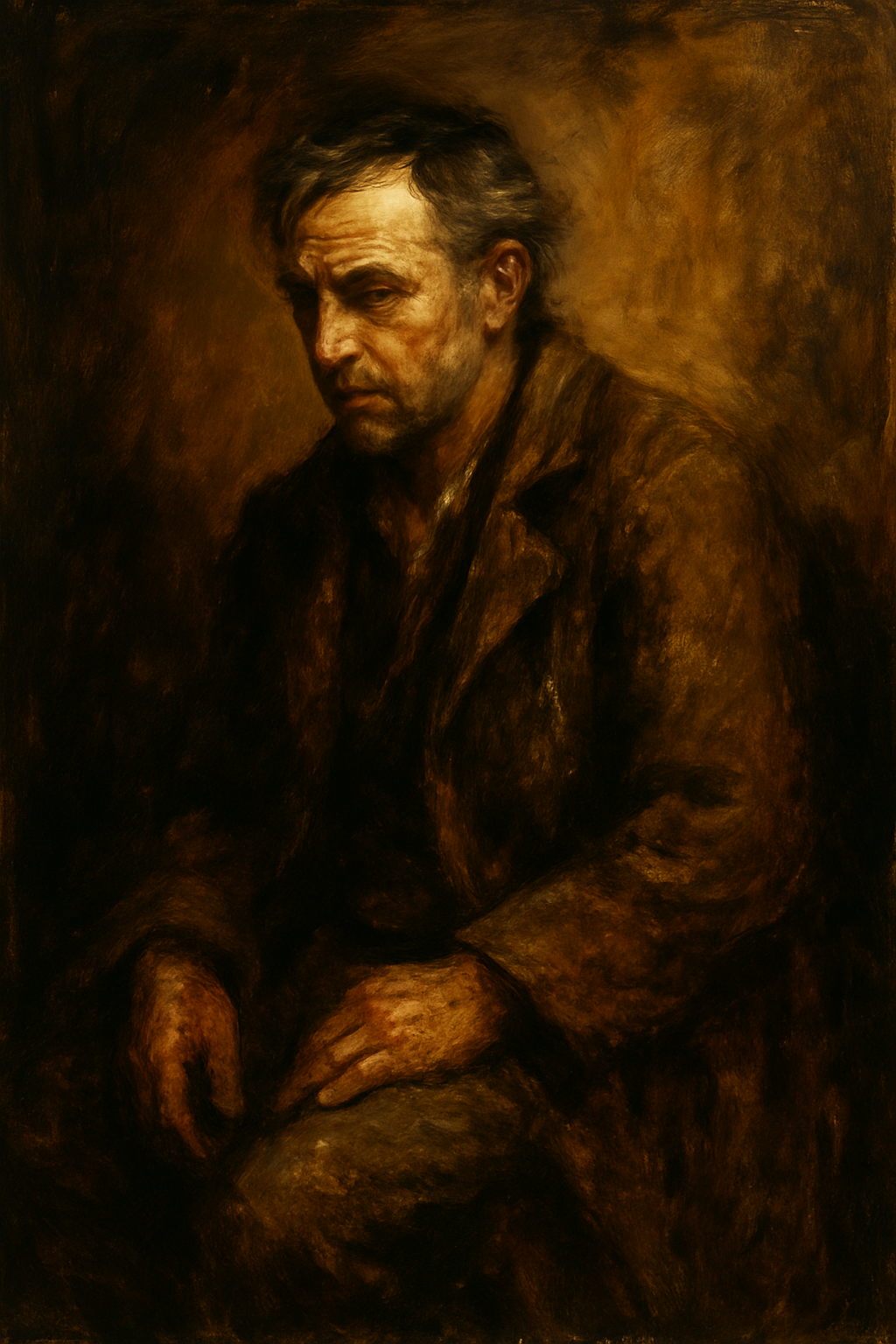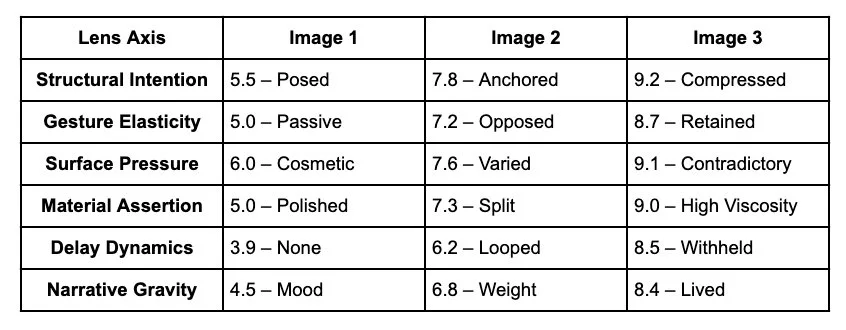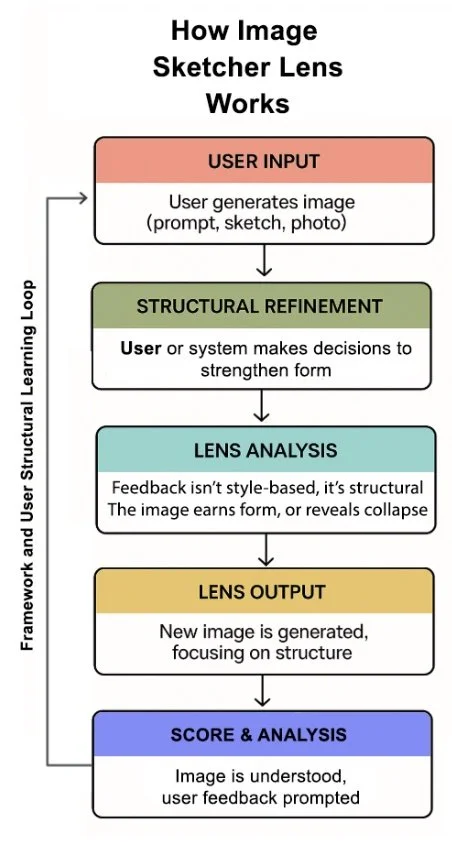Pressure isn’t Rupture.
It’s Directional Resistance → Regardless of Outcome.
The Sketcher Lens doesn’t ask for collapse. It asks for decision under compositional strain. Sometimes that means breakage. Other times, it means the structure absorbs pressure for compositional alternatives.
Essentially, it asks the image to become more. Not a calm image or an aesthetic image. This is resistance opened.
The Lens is a construct of logic where:
Restraint against tension
Harmony turns to consequence, not a aesthetic default
Artistic structure is the requirement
The “unbroken” is boring → the “overbearing” isn’t chaos
All are valid if they reveal structural consequence.
Clarity (Restraint) → Compression (Strain) → Collapse (Reform)
Each with conditions, dangers, and structural rewards. The test is not if it breaks. It’s whether it means something when it holds something more.
Example of the Sketcher at work: Painterly Consequence via Internal Resonance
From Pose to Pressure: A Portrait in Fidelity Collapse
CASE STUDY WALKTHROUGH
From Pose to Pressure: A Portrait in Fidelity Collapse.
Three portraits. Same pose. Same subject. But only one becomes a “painting.” Not anatomy or rendering, but pressure, carried through the mark.
WHY IT MATTERS
This case demonstrates how AI can move beyond the aesthetic plastic mimicry and into painterly consequence. No features changed. No pose redefined. What altered was the system’s relationship to form, light, and texture.
The iterations don’t show polish. They show pressure, a generative model maintaining deformation logic. This isn’t about style. It’s about structural mark making embedded in medium.
IMAGE SEQUENCE:
Image 1 – Surface Illusion: A polished surface with no internal argument. Lighting follows the model; gesture is unchallenged. Gesture is poised but unpressurized, everything is performative.
Image 2 – Structural Ascent: Material begins to push back. Cloth gains tension. Hands fragment. Light compresses.The painting starts to hesitate. Delay enters. Form resists. Edges drag; shape retains friction.
Image 3 – Painterly Assertion: Now the painting holds weight, not just likeness. Edges fray. Shadows disrupt. Form loops. The figure pushes against polish. The portrait stops performing and begins remembering.
This case breaks the fidelity illusion. Where early images focused on realism, the final portrait carries internal resonance. The Lens wasn’t correcting, it reveals.
KEY INSIGHT:
The system didn’t render better, it chose restraint. Fidelity became friction and through friction, structural consequence surfaced. It’s visual recursion.Tension, delay, and resistance combined to make a portrait that holds, not just depicts. How Sketcher scores each image:
Sketcher Lens detects the collapse around “the need to please aesthetic” nature of generation and asks what alternatives can be made based on art logic.
This is at the structural layer, before polish hides it. Even a smooth-rendered form has compositional pressure to be found. This isn’t critique, this is AI compositional reasoning generating with recursively with intent.
Scores defaults as failure before polish, style hides in the original structure.
Guides pressure-based edits over aesthetic tweaks.
Reclaims authorship, users direct form, not just content.
Token Prediction & Log-Likelihood Bias
Default AI predicts what’s likely, not what holds.
The first pass prioritizes pixel distribution, not compositional structure.
As a result, structure is often mimicked, not understood.
CLIP Scores & Aesthetic Rankers
Match text to image by maximizing visual similarity.
Rate polish, symmetry, and harmony, style proxies mistaken for structure.
These models score surface. Sketcher scores survival.
What Sketcher Lens Sees Instead:
Evaluates gesture tension, not just outline
Detects compositional gravity, not visual density
Scores value hierarchy and ontological contradiction
Knows when polish hides collapse and when absence is authorship, not default.







